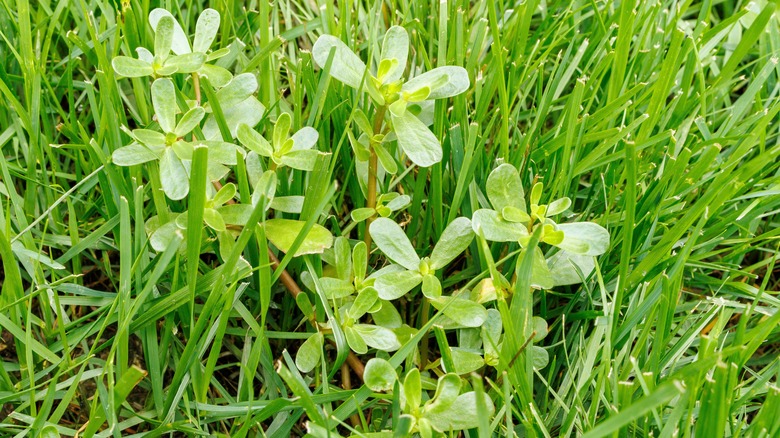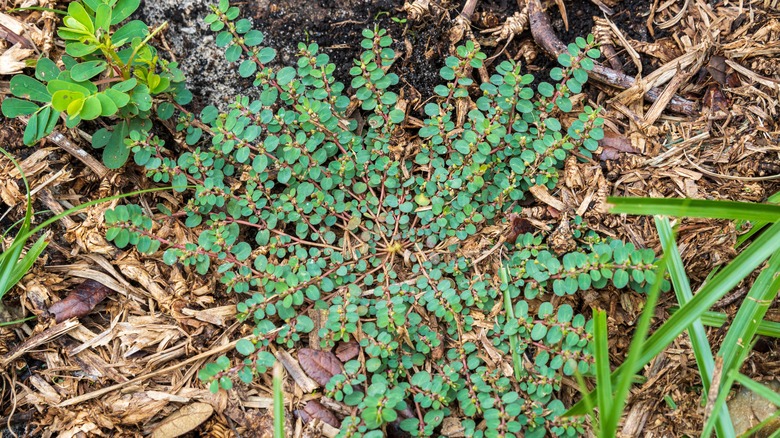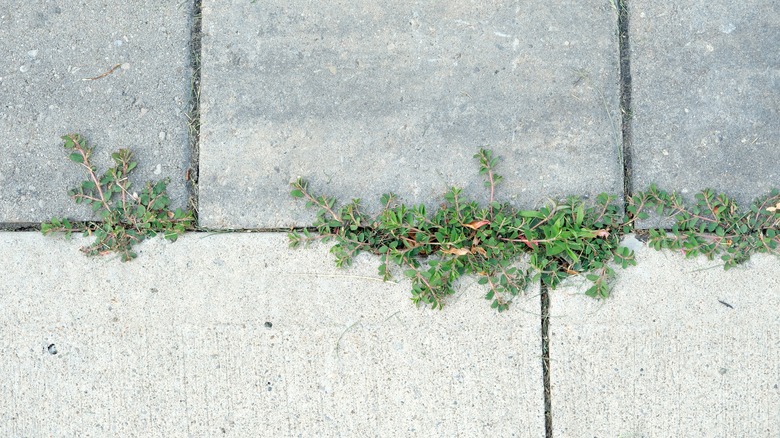The Absolute Best Methods To Remove Spurge Weed Effectively
As every gardener and lawn care enthusiast knows, weeds are not all made the same. While some weeds are beneficial native plants with a bad rap, others are hardy and difficult-to-kill invasive terrors. The first category of weeds includes pollinator-friendly flowers like goldenrod and milkweed, while the second includes plants that will send a shiver down the spine of anyone who's dealt with them before — like the invasive tree of heaven or the garden-consuming spotted spurge weed. Spotted spurge weed is an interesting plant because it is actually native to the Eastern U.S. but it spreads so quickly and is so difficult to get rid of that it is considered a notorious weed across the country (except for the Southeast).
In fact, spurge weed can grow in countless places, including in cracks of sidewalks, garden beds, landscaping beds, lawns, or even gravel driveways. While the best way to deal with spurge weed is to simply hand-pull it, the issue is that spurge weed often grows long tap roots that can easily regenerate the entire plant if you miss any part of them. This makes managing an infestation frustrating. As one Redditor on r/lawncare noted, dealing with a spurge weed problem is "a constant battle." So, here's how to effectively remove the weed once and for all so that your spurge weed battle doesn't turn into a multi-year war.
How and when to hand pull spurge weed
The best time to start pulling spurge weed is right when it appears in the spring. This is important for controlling your infestation because spurge weed tends to bloom and disperse seeds quickly. So, if you can pull the plant before the plant has a chance to seed, you can prevent further spread. A single spurge weed plant can produce 1,000 tiny seeds which are sticky and can easily be picked up by animals and people to be spread around your garden to start immediately growing, or simply lie dormant to pop up again next spring or even reappear to haunt you after multiple years. That's why to keep the spread of this plant under control, you should patrol your garden and try and pull all the new spurge weed up at least once every two to four weeks.
However, a word of caution. Because spurge weed plants contain a toxic milky sap, it is important to wear gloves whenever handling or pulling the plant (as if you already didn't have enough reasons to hate it). Also, to make sure that you successfully get the weed's deep tap root, it is best to pull spotted spurge when the soil is wet and loose. Alternatively, you can also use a garden spade or dandelion fork to loosen the plant and dig it out without breaking the roots.
Other spotted spurge weed management methods
The hand-pulling method is best used when you only have a small patch of spurge weed in your yard, or when it is growing in your garden near other plants. However, if you have a large spurge weed problem or it is growing in areas where you can't easily pull it or dig it out, you may need to turn to other solutions. These solutions can range from using a pre-emergent herbicide in problem areas to dousing the plant in a good helping of DIY weed killer (like this one that Martha Stewart uses). Also, if the weed is growing somewhere where you want nothing to grow (like in gravel or cracks in the sidewalk), you can turn to more extreme methods that will prevent all future plant growth like using boiling water to kill the weed.
Mulching has also been proven to help prevent spurge weed growth and is a great option for your flower garden to prevent any new seeds from sprouting. If you are having a problem with spurge weed in your lawn, the best defense is to keep your grass healthy and thick by not watering it every day and mowing it to the correct height.


